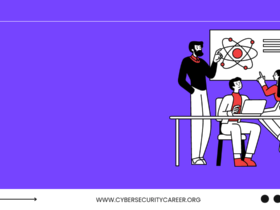Cyber security has become a crucial aspect of our digital world, especially when it comes to protecting critical infrastructure. With the rise of technology and increased connectivity, our reliance on these essential systems has grown significantly. However, as we’ve seen in recent years, cyber attacks have become more sophisticated and frequent, leaving organizations vulnerable to devastating consequences. In this blog post, we’ll explore how cyber security affects critical infrastructure and why it’s essential to protect these vital systems from potential threats. So buckle up and get ready for an informative ride!
What is critical infrastructure?
Critical infrastructure refers to the essential systems that are necessary for a country’s economy, security, and public health. These include transportation networks, energy grids, water supply systems, telecommunication networks, financial institutions and government services. Without these critical infrastructures functioning correctly, it could lead to significant disruptions in daily life.
The importance of critical infrastructure lies in its ability to provide basic needs and services for citizens. For example, a disruption in the power grid can cause blackouts resulting in traffic lights not working properly or hospitals losing electricity needed for medical equipment. In short: Critical infrastructure is crucial because it impacts everything we do on a daily basis.
However, with technology evolving rapidly over time comes the risk of cyber threats and attacks aimed at disrupting or damaging our vital infrastructure systems. It highlights how important it is to ensure proper measures are taken towards protecting these infrastructures from potential cyberattacks by implementing secure cybersecurity protocols and practices.
In conclusion; The impact of disrupted critical infrastructures can be devastating as they play an essential role in supporting human life across multiple sectors including healthcare finance transportation communication among others hence there is an urgent need to safeguard them from potential risks posed by cybercriminals through various cybersecurity measures.
How has cyber security evolved over the years?
Cybersecurity has come a long way since the early days of computing. In the 1980s, computer security was largely focused on protecting individual devices from viruses and malware. As technology evolved, so did the nature of cyber threats.
In the 1990s, with the rise of interconnected networks and internet connectivity, new vulnerabilities emerged. Cyber attackers began targeting not just individual computers but entire systems and networks. This led to the development of more sophisticated cybersecurity measures such as firewalls, intrusion detection systems and antivirus software.
The early 2000s saw an increase in targeted attacks by hackers seeking financial gain or political motives. Hackers exploited vulnerabilities in software programs to gain access to sensitive data or disrupt critical infrastructure like power grids. This led to increased emphasis on developing stronger encryption methods and improving incident response capabilities.
Today’s cybersecurity landscape is marked by rapidly evolving threats such as ransomware attacks and social engineering scams that target human behavior rather than technological weaknesses. The focus is shifting towards proactive threat intelligence gathering, predictive analytics and artificial intelligence-driven solutions that can detect threats before they can cause damage.
While cybersecurity remains a constant battle against ever-evolving threats, advances in technology have enabled us to develop increasingly effective defenses over time.
The importance of cyber security in critical infrastructure
Critical infrastructure is the backbone of any country’s economy. It comprises various sectors such as electricity, water supply, transportation, and telecommunications. The security of these infrastructures has become a growing concern due to the rising number of cyber attacks in recent times.
The importance of cybersecurity in critical infrastructure cannot be overstated. Cybersecurity measures are put in place to protect against unauthorized access or malicious attacks on data systems that could lead to severe economic consequences.
For instance, an attack on the power grid can cause massive blackouts and disrupt daily activities, leading to significant financial losses for businesses and individuals alike. Further still, it can create ripple effects across other sectors like healthcare and emergency services.
Therefore, ensuring the safety and protection of critical infrastructure systems through cybersecurity measures is crucial for national security. Governments must invest heavily in technology advancements that provide real-time monitoring capabilities capable of identifying potential threats before they happen.
Protecting critical infrastructures from ever-increasing cyber threats requires a concerted effort from all stakeholders involved; this includes government agencies responsible for regulation enforcement as well as private sector enterprises who provide essential services reliant on these networks’ safe operation.
How does cyber security affects critical infrastructure?
Cybersecurity plays a crucial role in protecting critical infrastructure, including power grids, water treatment facilities, transportation systems and communication networks. These infrastructures are essential for the functioning of modern society and require a high level of security to prevent cyber-attacks.
A successful cyber attack can cause significant damage to these systems, leading to power outages, disrupted transportation services or even the release of hazardous substances. This type of disruption can have severe consequences not only on people’s daily lives but also on national security.
As technology continues to advance, so do potential threats to critical infrastructure. Hackers are becoming more sophisticated in their attempts to breach these systems through various means such as phishing attacks or malware infections.
Therefore, it is important for organizations responsible for critical infrastructure to implement robust cybersecurity measures that include regular risk assessments and employee training programs. Such efforts should be taken seriously by both government agencies and private entities alike.
Maintaining strong cybersecurity practices is vital for protecting our nation’s critical infrastructure against potential threats posed by cybercriminals who seek vulnerabilities in these systems. By working together with professionals across various industries such as IT experts and law enforcement agencies we can ensure safe-guarding our essential facilities from all types of malicious activities.
The future of cyber security
As we’ve seen, cyber security is a crucial element for protecting critical infrastructure. With the evolution of technology and increasing threats from malicious actors, it’s clear that the future of cyber security will continue to be an important issue.
In the coming years, we can expect to see more advanced technologies being developed to protect against cyber attacks. Artificial intelligence and machine learning are already being used in some cases to detect and respond to threats faster than humans could ever manage alone.
Additionally, as more devices become connected through the Internet of Things (IoT), there will be even greater need for robust cybersecurity measures. The challenge here will be ensuring that every device on a network is secure – one weak link could compromise an entire system.
It’s worth noting that while technology plays a huge role in cyber security, people remain at its heart. Human error is still one of the biggest risks when it comes to cybersecurity – whether through accidentally clicking on phishing emails or using weak passwords – so education and awareness-raising will continue to play an essential role in keeping our critical infrastructure safe.
Then, while there are certainly challenges ahead when it comes to securing our critical infrastructure against cyber attacks, there are also reasons for optimism. By staying vigilant and continuing to innovate with new technologies and approaches, we can ensure that our most vital systems remain protected well into the future.










Leave a Reply